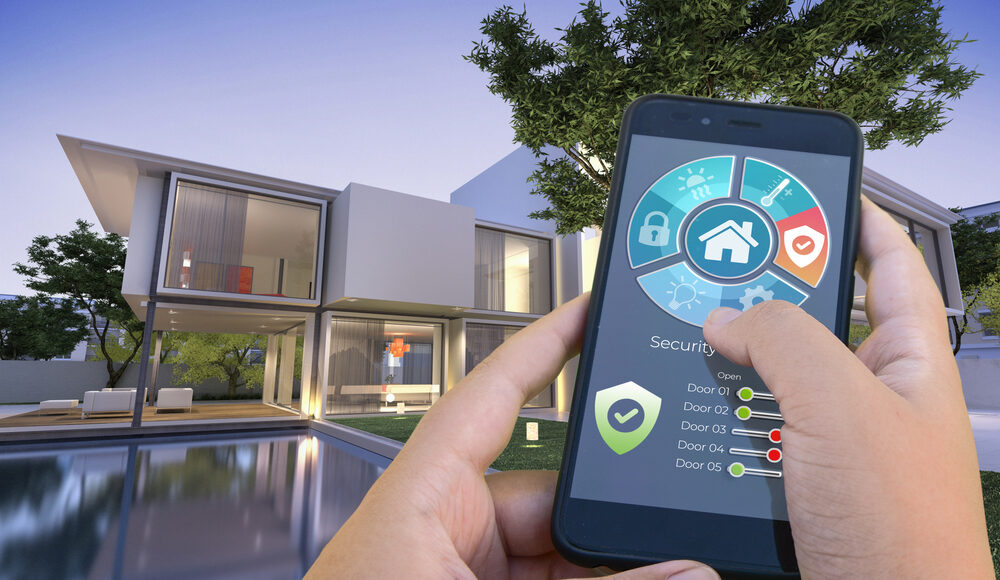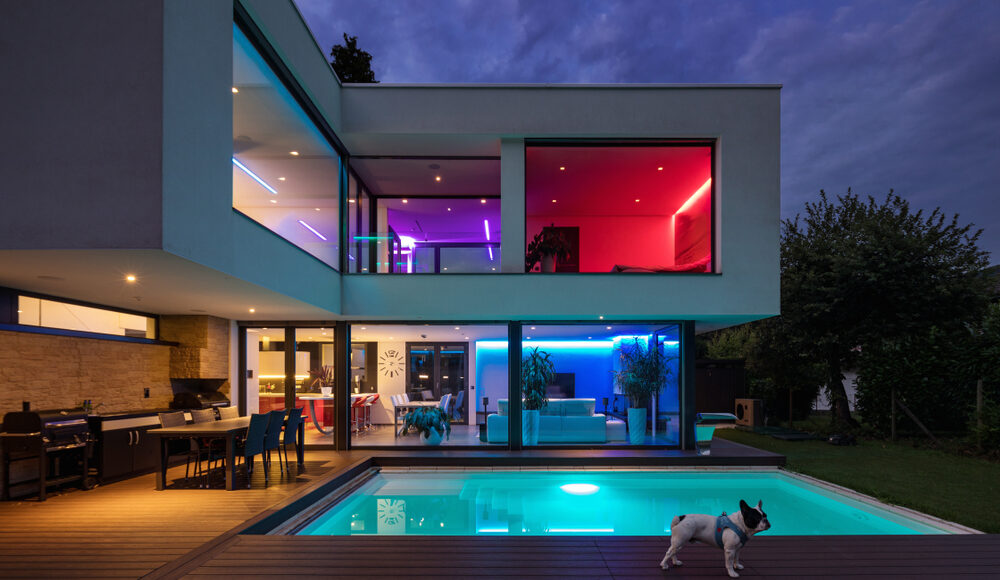The Benefits of Lighting Control Systems
In today’s modern world, lighting control systems have revolutionized the way we illuminate our homes and commercial spaces. These systems offer advanced functionality and convenience, allowing users to manage and customize their lighting with ease. From enhancing ambiance to improving energy efficiency, lighting control systems have become an integral part of smart homes and businesses. This comprehensive guide will explore the benefits of lighting control systems, their features, types, and how they can transform your space.
Table of Contents:
- Introduction to Lighting Control Systems
- Benefits of Lighting Control Systems a. Enhanced Convenience and Comfort b. Energy Efficiency and Cost Savings c. Improved Security and Safety d. Customization and Ambiance e. Increased Lifespan of Light Fixtures
- Types of Lighting Control Systems a. Manual Control Systems b. Programmable Control Systems c. Sensor-Based Control Systems d. Networked Control Systems
- Components of Lighting Control Systems a. Lighting Controllers b. Dimmers and Switches c. Sensors and Detectors d. Lighting Software and Apps
- Integration with Smart Home Systems
- Professional Installation and Maintenance
- Case Studies: Real-World Applications
- Choosing the Right Lighting Control System a. Assessing Your Lighting Needs b. Budget Considerations c. Scalability and Expandability d. Compatibility with Existing Lighting Infrastructure
- Industry Leading Lighting Control System Providers
- Conclusion
- Introduction to Lighting Control Systems:
Lighting control systems offer users the ability to manage and control the lighting in their homes, offices, or commercial spaces. These systems utilize various technologies, including switches, dimmers, sensors, and software, to provide precise control over individual lights or groups of lights. From adjusting brightness levels to creating lighting scenes and schedules, these systems enable users to customize their lighting experience according to their preferences and requirements.
- Benefits of Lighting Control Systems:
a. Enhanced Convenience and Comfort: Lighting control systems offer unparalleled convenience by providing users with effortless control over their lighting. With the touch of a button or through voice commands, users can adjust lighting levels, create preset scenes for different activities, and even control their lights remotely using mobile apps or voice assistants. This convenience enhances comfort and simplifies daily routines.
b. Energy Efficiency and Cost Savings: One of the significant advantages of lighting control systems is their ability to improve energy efficiency. These systems allow users to schedule lights to turn on and off automatically, utilize occupancy sensors to detect activity and adjust lighting accordingly, and integrate with natural light sensors to maximize daylight utilization. By optimizing lighting usage, energy consumption is reduced, leading to substantial cost savings on utility bills.
c. Improved Security and Safety: Lighting control systems play a crucial role in enhancing security and safety. With features like motion sensors and timed schedules, these systems can create an impression of an occupied space, deterring potential intruders. Additionally, lighting control systems can be integrated with security systems, allowing lights to flash or turn on in the event of an alarm. In terms of safety, these systems can illuminate pathways or staircases automatically, reducing the risk of accidents.
d. Customization and Ambiance: Lighting control systems provide unparalleled customization options, allowing users to create unique lighting scenes and moods. From adjusting color temperatures to dimming lights to the desired level, users can create the perfect ambiance for different occasions or activities. Whether it’s a cozy movie night or a vibrant dinner party, lighting control systems enable users to transform their spaces effortlessly.
e. Increased Lifespan of Light Fixtures: By utilizing dimmers and adjusting lighting levels, lighting control systems can extend the lifespan of light fixtures. Lowering the intensity of light reduces wear and tear on bulbs and fixtures, leading to fewer replacements and reduced maintenance costs over time.
- Types of Lighting Control Systems:
a. Manual Control Systems: Manual control systems involve traditional switches and dimmers that provide basic control over individual lights or groups of lights. While these systems offer simplicity and affordability, they lack advanced features and automation capabilities.
b. Programmable Control Systems: Programmable control systems allow users to schedule lighting scenes and activities in advance. These systems can be set to turn lights on and off at specific times or adjust lighting levels throughout the day, providing convenience and energy efficiency.
c. Sensor-Based Control Systems: Sensor-based control systems utilize occupancy sensors, daylight sensors, or motion detectors to detect activity or natural light levels. Based on the input from sensors, the lighting system adjusts accordingly, optimizing energy usage and enhancing security.
d. Networked Control Systems: Networked control systems are more advanced and interconnected, allowing for centralized control and monitoring of lighting across multiple areas or even buildings. These systems often integrate with building management systems or smart home platforms for seamless operation and management.
- Components of Lighting Control Systems:
a. Lighting Controllers: Lighting controllers are the central hub of lighting control systems. They receive commands from switches, sensors, or software, and communicate with light fixtures to adjust lighting levels or activate preset scenes.
b. Dimmers and Switches: Dimmers and switches provide manual control over lights. Dimmers allow users to adjust the brightness of lights, while switches provide on/off control. These components are available in various styles, including traditional wall-mounted switches, touch-sensitive panels, or even wireless remote controls.
c. Sensors and Detectors: Sensors and detectors are essential components of sensor-based lighting control systems. Occupancy sensors detect movement and occupancy in a room, allowing lights to turn on or off automatically. Daylight sensors measure natural light levels and adjust artificial lighting accordingly.
d. Lighting Software and Apps: Lighting control systems often come with dedicated software or mobile apps that enable users to control and customize their lighting. These interfaces provide intuitive control, scheduling options, and the ability to create lighting scenes.
- Integration with Smart Home Systems:
Lighting control systems can seamlessly integrate with smart home systems, allowing users to control their lighting along with other smart devices through a central hub or mobile app. Integration with voice assistants, such as Amazon Alexa or Google Assistant, enables users to control their lights using voice commands.
- Professional Installation and Maintenance:
To ensure optimal performance and reliability, it is recommended to have lighting control systems professionally installed. Certified technicians can properly set up the system, configure settings, and provide guidance on the system’s operation. Regular maintenance and software updates also contribute to the system’s longevity and performance.
- Case Studies: Real-World Applications:
Real-world applications of lighting control systems vary from residential homes to commercial spaces. In residential settings, these systems can create personalized lighting experiences for different rooms or outdoor areas. In commercial spaces, lighting control systems offer energy-efficient lighting solutions for offices, retail stores, hotels, and more. Case studies showcasing successful implementations of lighting control systems can provide insights into their practical use.
- Choosing the Right Lighting Control System:
When selecting a lighting control system, several factors should be considered:
a. Assessing Your Lighting Needs: Consider the specific requirements of your space, such as the number of rooms, types of lighting fixtures, and desired functionalities. This evaluation will help determine the appropriate system and components.
b. Budget Considerations: Establish a budget that aligns with your expectations and requirements. Lighting control systems can range from simple and cost-effective solutions to more complex and feature-rich options.
c. Scalability and Expandability: Consider the scalability of the system, especially if you plan to expand or upgrade your lighting in the future. Ensure that the chosen system allows for easy integration of additional lights or features.
d. Compatibility with Existing Lighting Infrastructure: If you have existing lighting fixtures or infrastructure, ensure compatibility with the chosen lighting control system. Retrofitting existing fixtures with compatible dimmers or switches may be necessary.
- Industry Leading Lighting Control System Providers:
There are numerous reputable providers of lighting control systems in the market. Some of the leading companies include:
- Company A: Known for its user-friendly interfaces and innovative solutions.
- Company B: Specializing in scalable lighting control systems suitable for both residential and commercial applications.
- Company C: Offering comprehensive lighting control solutions with a focus on energy efficiency and sustainability.
- Company D: Providing advanced networked lighting control systems for large-scale projects.
- Conclusion:
Lighting control systems offer numerous benefits, ranging from enhanced convenience and comfort to energy efficiency and improved security. By choosing the right system and components, you can transform your space, create personalized lighting experiences, and maximize energy savings. Evaluate your lighting needs, consider budget and compatibility, and seek professional guidance to ensure a successful implementation. Illuminate your surroundings with the power of lighting control systems and enjoy the numerous advantages they bring to your home or business.



